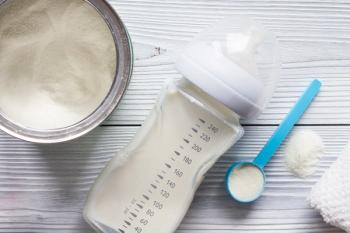
Longer lunch periods could improve nutrition
With the need to pack as much time in the classroom, many school districts have taken time away from the lunch period. A report illuminates why that may be hurting children’s nutrition.
It’s recommended that children have at least 20 minutes of seated time for lunch, but there are no widespread regulations that ensure that children get this and many schools have reduced lunch periods to add time to educational periods. A
Investigators invited children who were participating in a summer camp at the University of Illinois at Urbana-Champaign. The children were elementary or middle school-age and were given a lunch that met National School Lunch Program nutrition standards. There were 5 menus served during the course of the study and a 20-minute or 10-minute seated lunch period was randomly assigned to each day. Primary outcomes were food waste, food consumption, and dietary intake, which was separated into meal component and assessed for calories, fat, carbohydrates, fiber, protein, vitamin D, calcium, iron, and potassium.
A total of 241 lunch trays for 38 were observed. The investigators noted that during the 10 minutes of seated lunch time, children consumed a significantly less amount of vegetables (−14.1 percentage points; 95% CI, −22.7 to −5.7) and fruits (−11.3 percentage points; 95% CI, −18.1 to −4.5) than in the 20 minutes of seated lunch time. Waste as well as entrée and beverage consumption showed no differences between either lunch condition. Additionally, during the 20-minute seated lunch period, children consumed more and wasted significantly less dietary fiber (−0.51 g; 95% CI, −0.81 to −0.19 g), protein (−1.11 g; 95% CI, −2.17 to −0.04 g), iron (−0.20 mg; 95% CI, −0.38 to −0.02 mg), potassium (−53.49 mg; 95% CI, −84.67 to −22.32 mg), carbohydrates (−3.81 g; 95% CI, −6.20 to −1.42 g), and calories (−22.03 kcal; 95% CI, −39.47 to −4.61 kcal).
The investigators concluded that a longer lunch period led to children eating more fruits and vegetables. They believe that the findings support the creation of policies that ensure children have at least 20 minutes of seated lunch time to ensure children get nutritious lunches.
Reference
1. Burg X, Metcalfe J, Ellison B, Prescott M. Effects of longer seated lunch time on food consumption and waste in elementary and middle school–age children: a randomized clinical trial. JAMA Netw Open. 2021;4(6):e2114148. doi:10.1001/jamanetworkopen.2021.14148
Newsletter
Access practical, evidence-based guidance to support better care for our youngest patients. Join our email list for the latest clinical updates.








